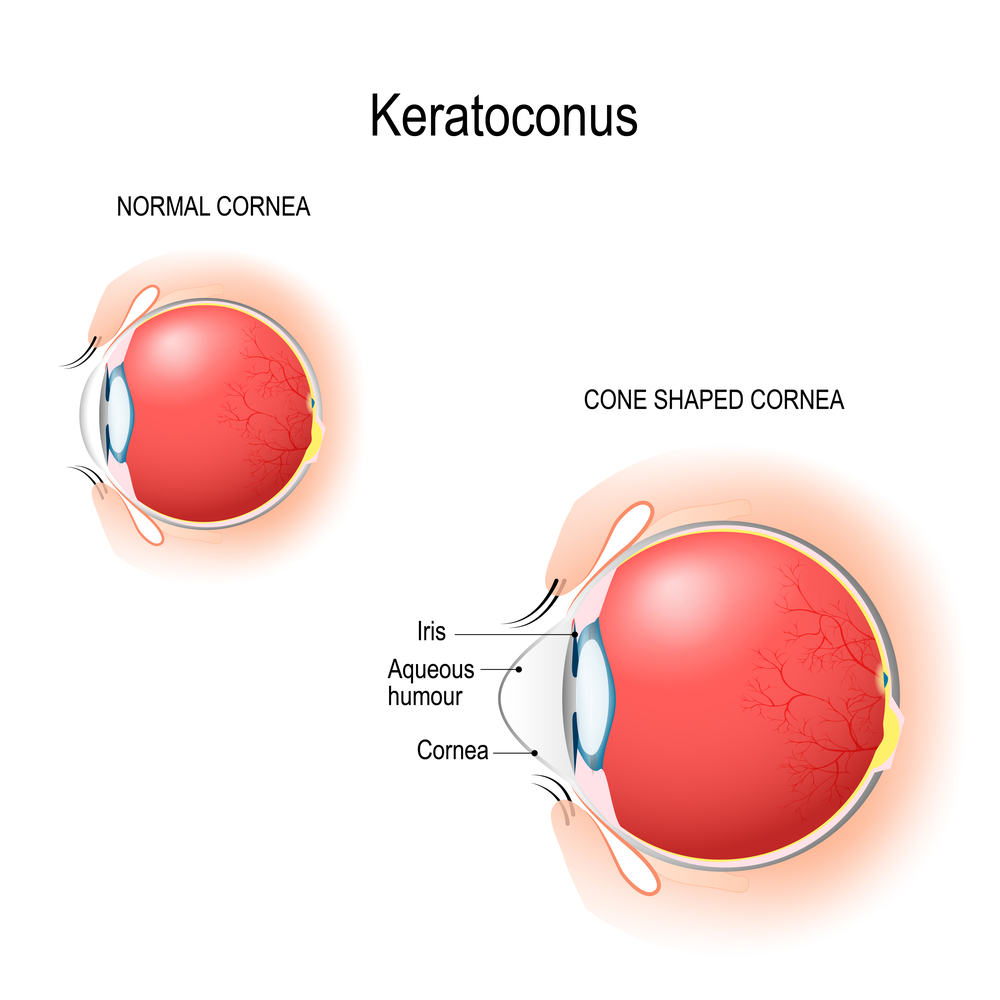The clear, dome-shaped window in the front of your eye is called the cornea and concentrates light on your eye. Keratoconus is a condition in which the cornea thins out and bulges outwards like a cone. Light rays become out of focus when the cornea’s shape changes. As a result, your eyesight becomes hazy and distorted, making everyday tasks like reading and driving difficult.

Doctors are unsure why people develop keratoconus. It appears to be genetic and passed down through families. One out of every ten people with keratoconus has a parent who also has the condition. Keratoconus has been linked to allergies resulting in frequent rubbing of the eyes, and connective disorders such as Marfan syndrome and Ehlers-Danlos syndrome.
Keratoconus commonly affects both eyes, resulting in drastically differing vision in the two. Symptoms differ from one eye to the next, and may change over time.
Keratoconus symptoms in the early stages may include:
- mild vision blurriness
- slightly distorted vision, where straight lines look bent or wavy
- increased sensitivity to light and glare
- eye redness or swelling
Keratoconus is detected during an eye exam. Your cornea will be examined and its curvature may be measured by your ophthalmologist. This makes it easier to see if the shape of the object has changed. Corneal topography is the most common diagnosis option. The doctor takes a picture of your cornea and carefully examines it.
Your symptoms determine treatment for keratoconus. When your symptoms are minor, eyeglasses can be used to correct your vision. In some cases, specialty contact lenses can be a treatment option to keep your vision in focus.
Keratoconus treatments may include:
Intacs- This is a small, curved device that is surgically implanted in your cornea by an ophthalmologist. Intacs help to improve eyesight by flattening the curvature of your cornea.
Cross-linking of collagen- To strengthen the cornea, your ophthalmologist utilizes specific UV light and eye medications. This helps to keep your cornea from expanding any further by flattening or stiffening it.
Corneal transplant- A procedure that involves replacing the cornea. Your ophthalmologist may recommend a corneal transplant if your symptoms are severe; healthy, donor, cornea tissue will be used to replace all or part of your damaged cornea.
Early detection is key and treatment is essential to improving this condition. Schedule an appointment with one of our corneal specialists to explore the best treatment options.






